Benford's Law, also called the First-Digit Law, is often used to verify numeric data for fraud or manipulations. Main principle of the Law: "the digits in real world appear disproportionately. The smaller number, the more frequently it appears." According to the Law, digit 1 appears goes first in 30% of numbers, digit 2 - in 17.6%, and 9 - only in 4.58%. This law was proved many times: river pool areas, population of countries, height of buildings, financial and sociological data – all of them usually conform to the Law. The Benford's Law is being lately used for verification of fairness and transparency of election campaigns.
We've tried to apply the Benford's Law to verification of voting results in 2014 parliamentary elections. To start with, we verified the nationwide data, and then results in every district. Six leading parties plus the AUU Svoboda and the Communist Party were selected for verification of election results.
Verification of nationwide data showed no deviation from the Benford's Law. Even despite factual data sometimes didn't correspond to the theory, we didn't notice any significant deviations. Thus, we applied the Pearson's chi-square test to get precise information about deviations. This test allows to compare the data and prove/disprove a thesis that these data correspond to one mathematical law. When we verified the nationwide data, the biggest visual deviations from theoretic regularities were notices in voting results for the Radical Party of Oleh Liashko. However, the chi-square test didn't show any significant deviations between theoretical and factual data of the Radical party and other 8 parties. Verification results for the indicator "number of votes at polling stations" for the People's Front and the Radical Party of Oleh Liashko are given below. The column "theoretical frequency" shows how frequent the certain digit should be. The column "factual frequency" shows how frequent the certain digit is. We analyzed "first meaningful digits" - first digits of every number. We took the indicator "number of votes for a party at a polling station" as a source data.
Picture 1 — Conformity of the voting results for the People's Front to theoretical division according to the Benford's Law.
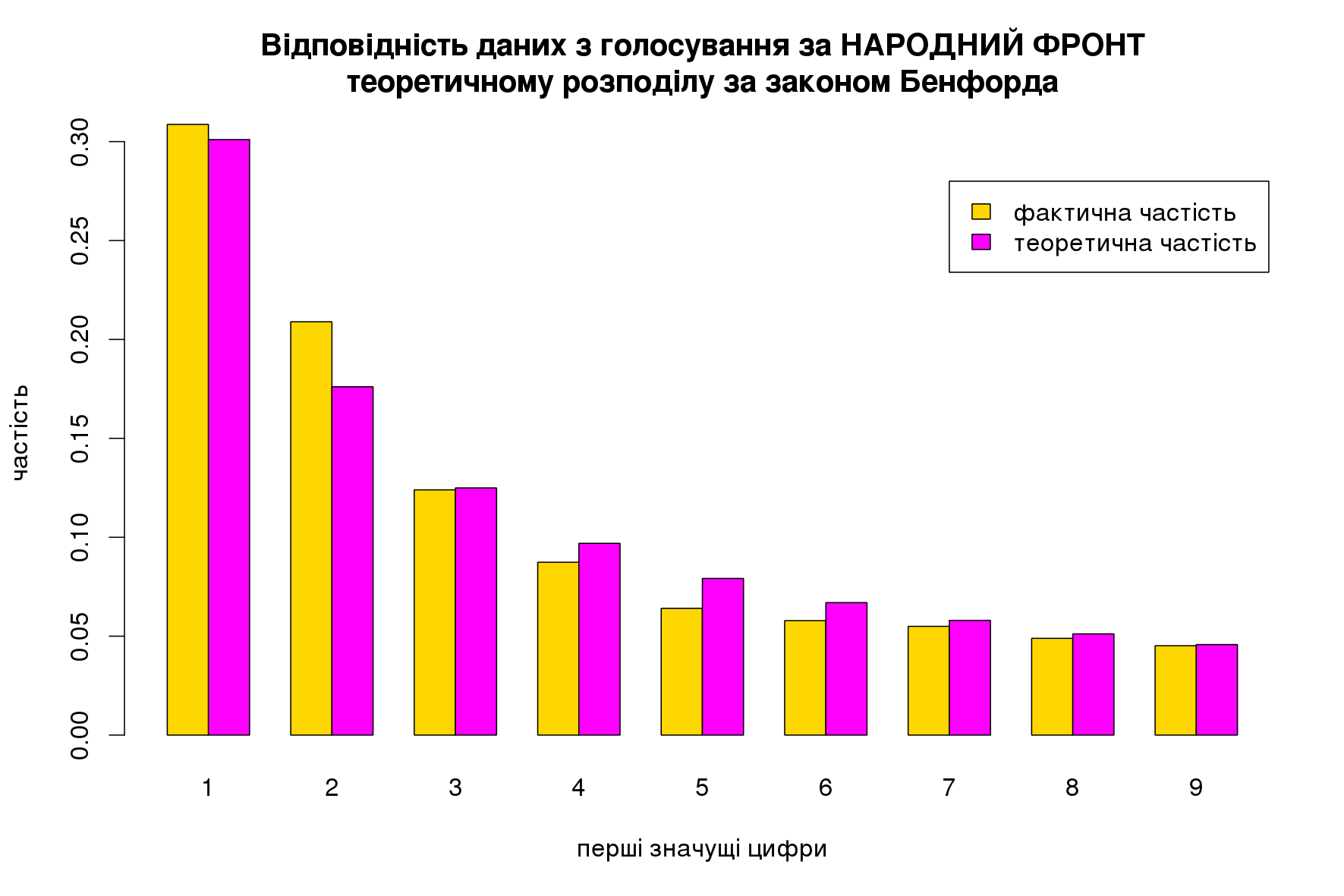
Picture 2 — Conformity of the voting results for the Radical Party of Oleh Liashko to theoretical division according to the Benford's Law.
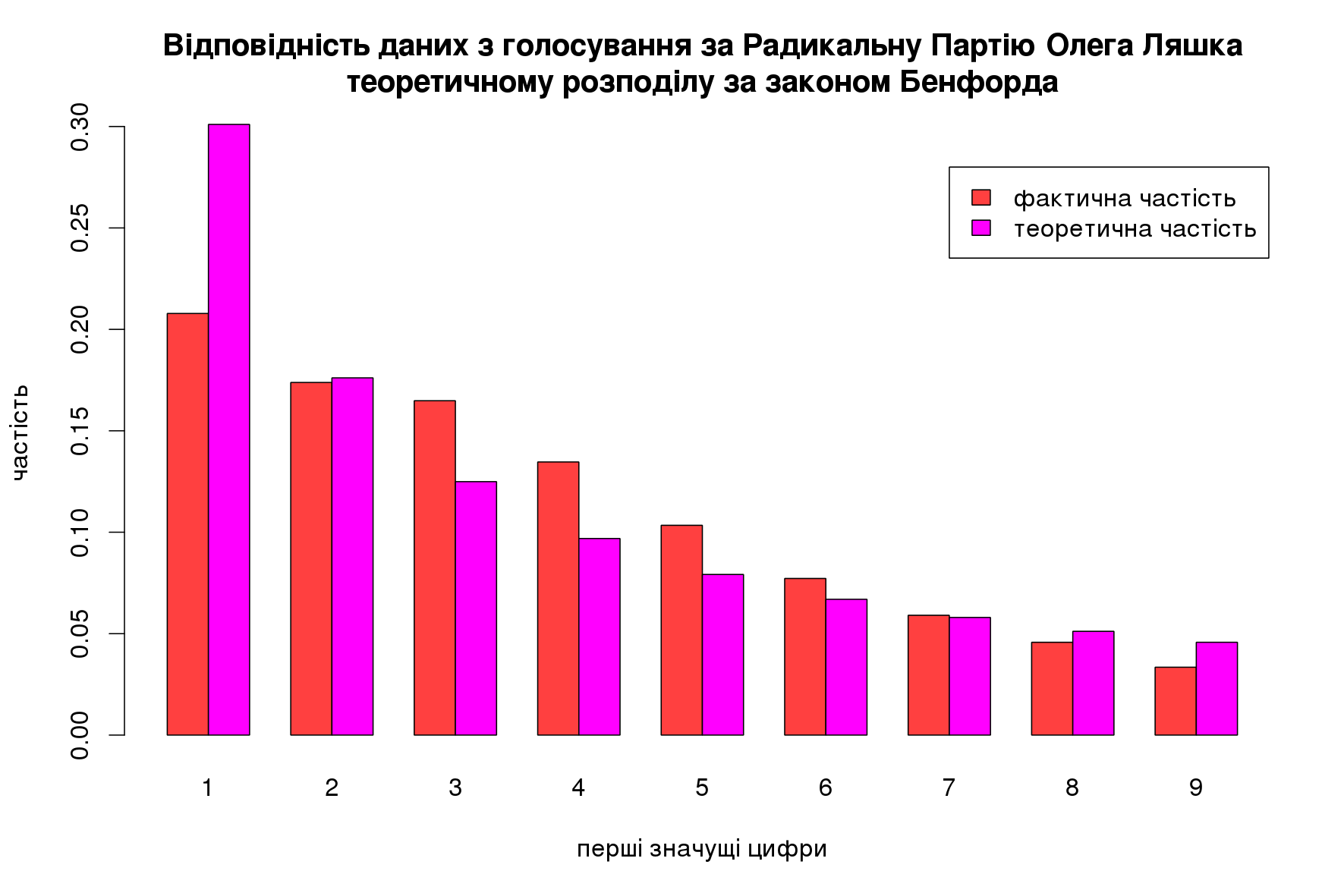
In general, all the verified parties are within the limits of accidental discrepancies. However, the results of verification made for every district are far more interesting. Firstly, we noticed 223 deviations from the Benford's Law at 198 electoral districts (for 8 parties). Secondly, almost the same number of deviations is "on the edge of trust". We took 0.1 (10%) importance level of chi-square as a limit. As a result, we've found that a lot of verification results are within 0.2-0.1. Thus, we consider these data as "candidates for gerrymander". Thirdly, and the most suspiciously, deviation from the Benford's Law is noticed for some political parties simultaneously in some districts. For example, in districts #27 (Samopomich, Batkivshchyna, Svoboda, Communist Party), #50 (Opposition Block, Radical Party, Svoboda, Communist Party), #155 (Petro Poroshenko Block, Samopomich, Radical Party, Batkivshchyna), #187 (Petro Poroshenko Block, Samopomich, Batkivshchyna, Svoboda, Communist Party), #223 (Petro Poroshenko Block, Samopomich, Opposition Block, Batkivshchyna) and other. Such cumulative discrepancies makes us think that votes given for some political parties "disappeared", and "appeared" as votes for other parties. Unfortunately, we cannot explain these discrepancies by sociological, geographical, or other factors. The thing is, adjacent districts have "decent" results, i.e. without deviation from the Benford's Law. Therefore, we suspect that there was an external interference in numerical data, and its change. For detailed illustration, were selected districts where deviation from the Benford's Law was noticed for four and more parties. We hope that our audience will manage to determine the reasons of such deviations and results of such machinations (if there were any).
Table 2 — Election districts with four or more deviations from the Benford's Law in voting results
|
Single-member district |
Number of deviations from the Benford's Law |
Parties, which have deviation from the Benford's Law in election results |
|
27 |
4 |
Samopomich, Batkivshchyna, Svoboda, Communist Party |
|
50 |
4 |
Opposition Block, Radical Party, Svoboda, Communist Party |
|
136 |
5 |
Petro Poroshenko Block, Radical Party, Batkivshchyna, Svoboda, Communist Party |
|
155 |
4 |
Petro Poroshenko Block, Samopomich, Radical Party, Batkivshchyna |
|
187 |
5 |
Petro Poroshenko Block, Samopomich, Batkivshchyna, Svoboda, Communist Party |
|
189 |
4 |
People's Front, Petro Poroshenko Block, Oppotision Block, Communist Party |
|
192 |
4 |
Samopomich, Opposition Block, Radical Party, Batkivshchyna |
|
202 |
4 |
Petro Poroshenko Block, Samopomich, Svoboda, Communist Party |
|
223 |
4 |
Petro Poroshenko Block, Samopomich, Opposition Block, Batkivshchyna |
As we can see, suspicious results of vote count belong to districts which were not famous of loud scandals. Everything done secretly and quietly.
We provide diagrams illustrating the verification made in district #202 (Chernivtsi oblast) as an evidence of our research. The diagrams contain theoretical and factual frequencies of first meaningful digits for the Petro Poroshenko Block, Samopomich, Svoboda, and Communist Party.
Picture 3 — Comparison of the voting results for the Petro Poroshenko Block with theoretical division according to the Benford's Law (single-member district #202)
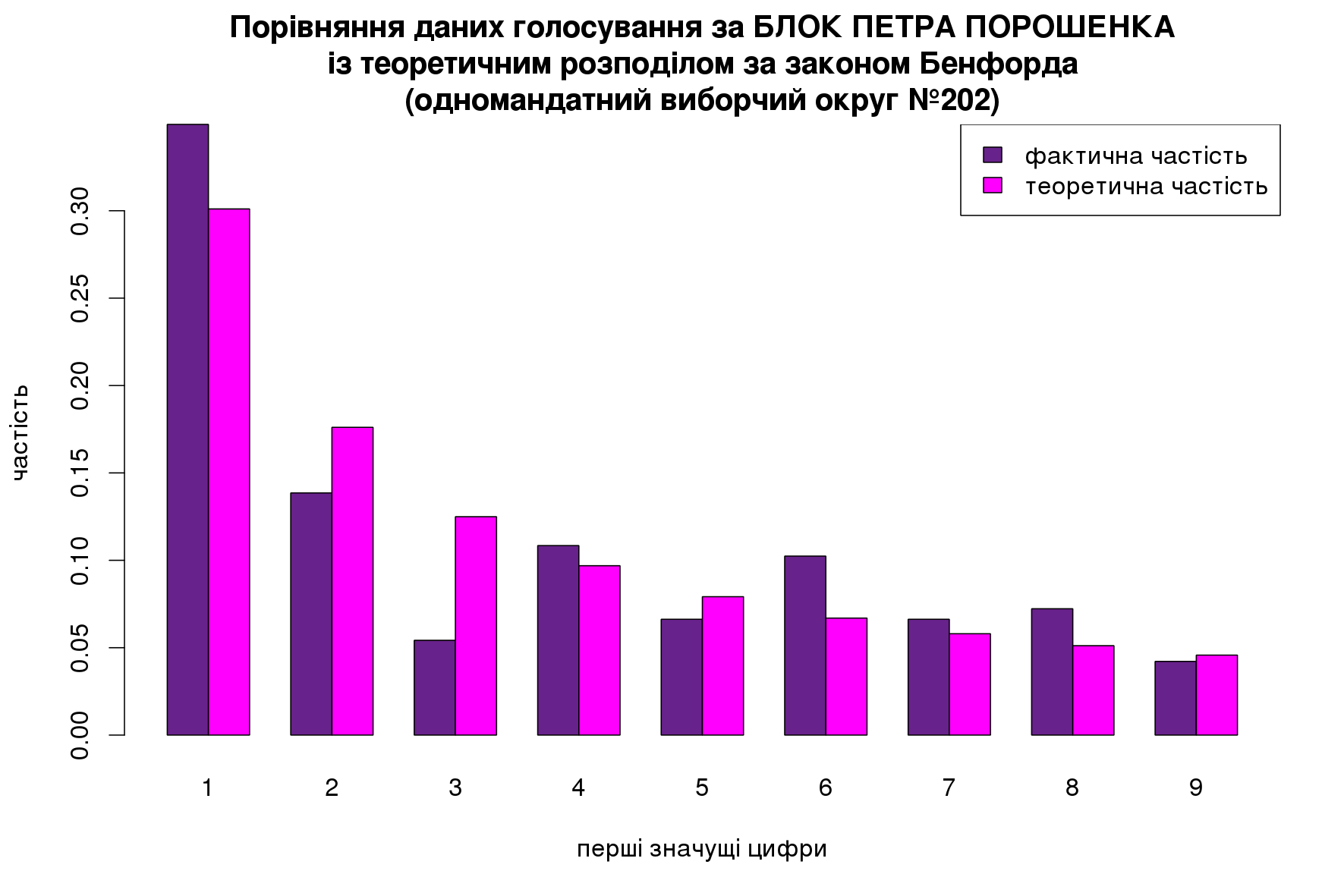
Picture 4 — Comparison of the voting results for the Samopomich Union with theoretical division according to the Benford's Law (single-member district #202)
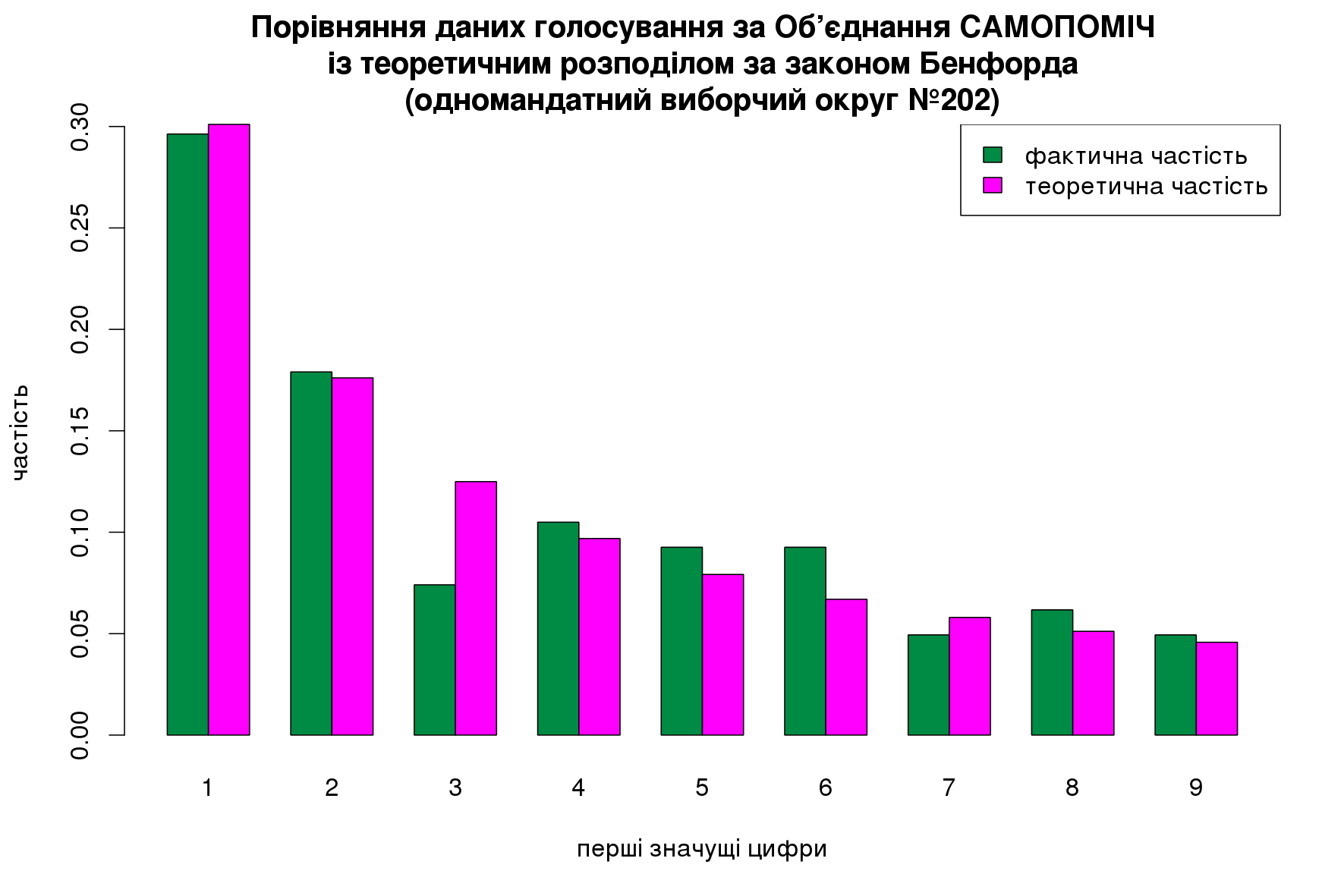
Picture 5 — Comparison of the voting results for the AUU Svoboda with theoretical division according to the Benford's Law (single-member district #202)
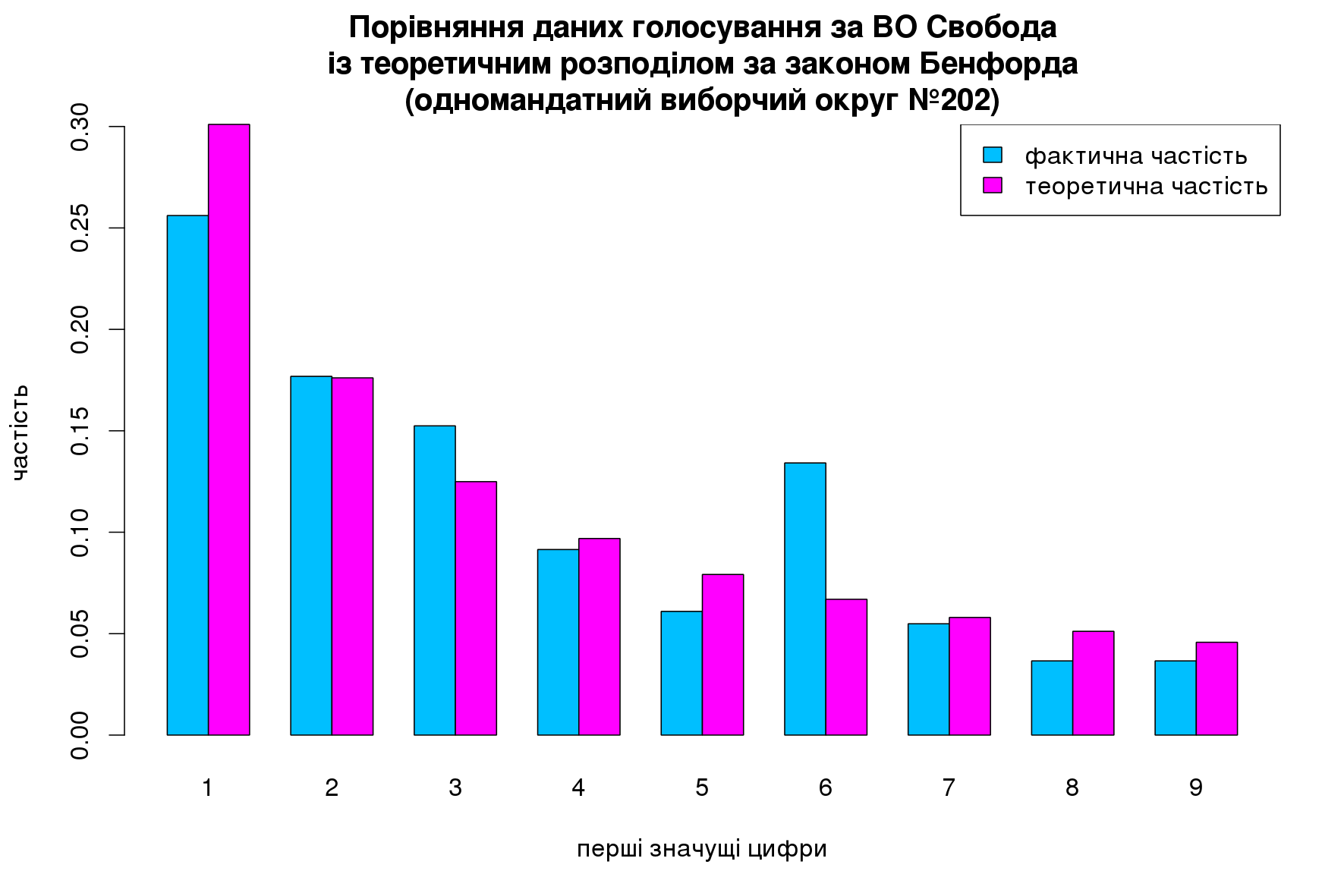
Picture 6 — Comparison of the voting results for the Communist Party with theoretical division according to the Benford's Law (single-member district #202)
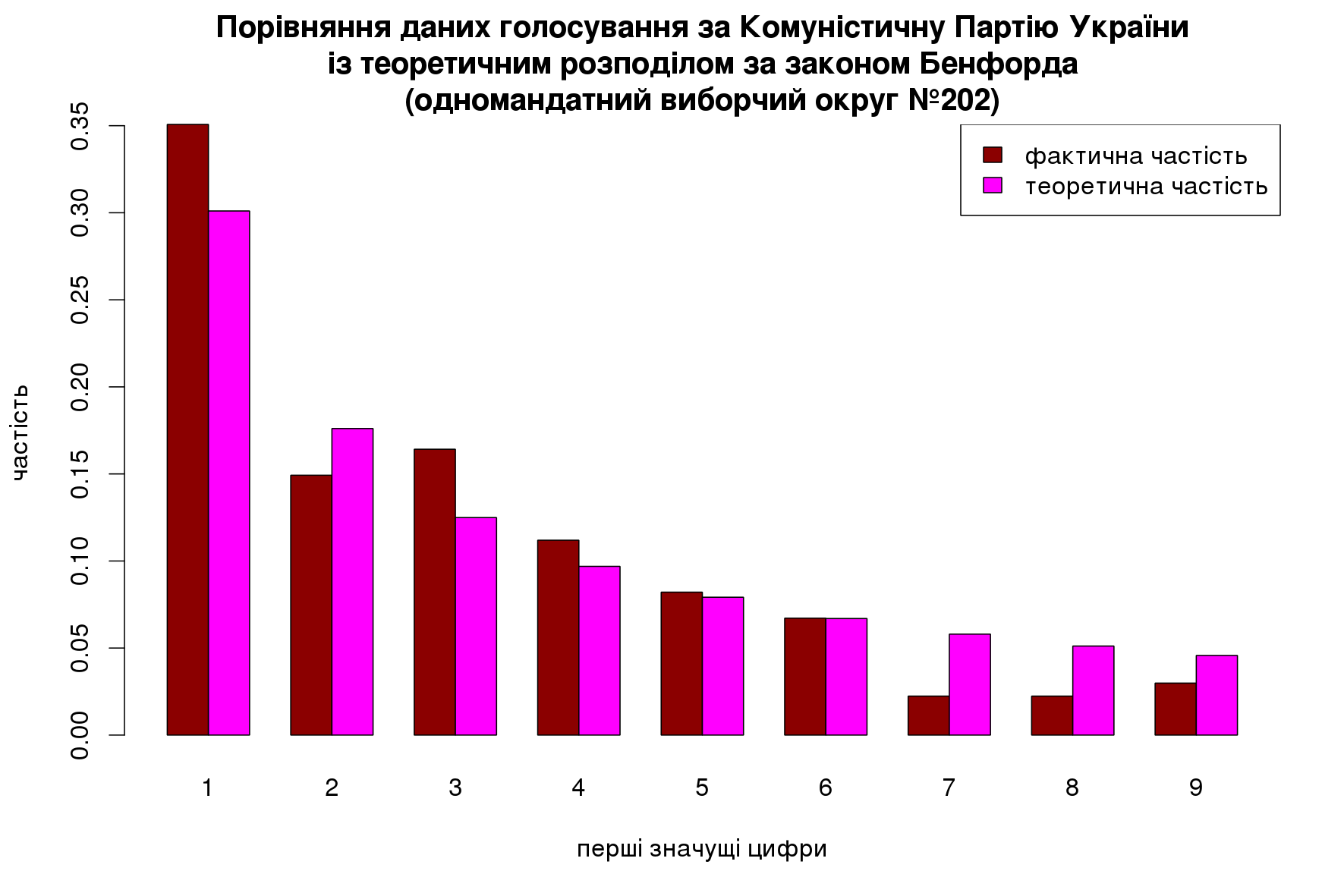
The diagram illustrating data of the AUU Svoboda is a striking example of gerrymander. Digit "6" is especially noticeable. According to the Benford's Law, digit "6" should be first in 6.69% numbers. It means 11 times (10.979) for a bunch of 164 numbers. In our case, we have digit "6" first in 22 numbers. It's twice bigger than it should. It wouldn't be a problem if adjacent digits would appear with similar frequency, but they don't. We may suspect that Svoboda was trying to make the results higher, but not too bluntly (without writing digits 8 and 9). Thus, we can see that their efforts are not very concealed. Diagram with results of the Communist Party is absolutely opposite – there are almost no "high" digits – 7, 8, and 9. Having verified the numbers, we have suspicion that the Communist Party got some "assistance" in losing their chance to get into the Parliament.
Thus, we can name nine districts where the technology of "re-written protocols" was applied. In general, 128 districts have discrepancies from theoretical division. The administrative binding of these districts is the most interesting. To illustrate, we made a cartogram containing the total number of discrepancies from the Benford's Law within an oblast. This indicator shows the total number of all doubtful results for every of 8 parties at every district.
Picture 7 — Cartogram containing the total number of discrepancies from the Benford's Law
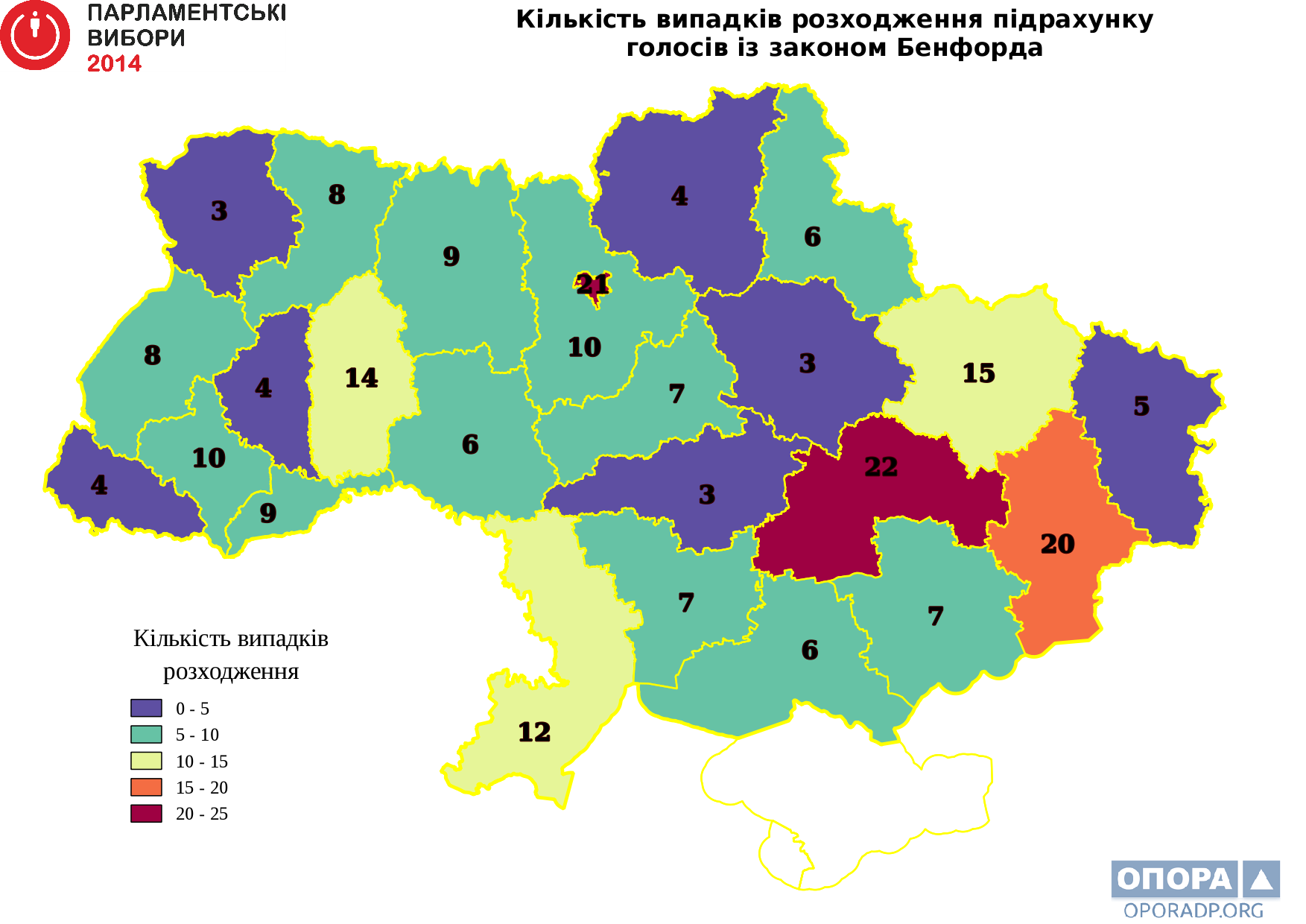
As we can see, Dnipropetrovsk oblast (22), Donetsk oblast (20), and Kyiv city (21) are leading in the number of data manipulations. Kharkiv oblast (15), Khmelnytsk oblast (14), and Odesa oblast (12) are far behind. In other Ukrainian oblasts, district election commissions made mostly less than ten "suspicious" vote counts. The smallest number of voting results manipulations were noticed in Volyn, Kirovohrad, and Poltava oblasts – only three cases of discrepancies from the Benford's Law in each oblast.